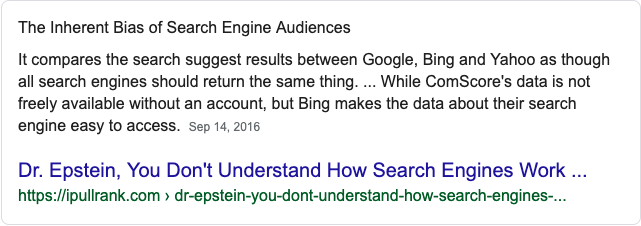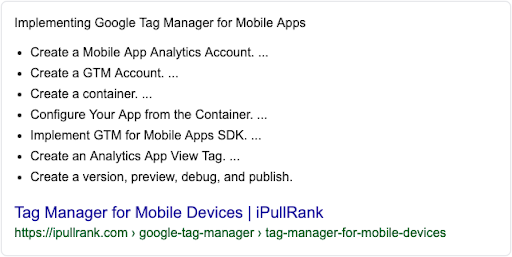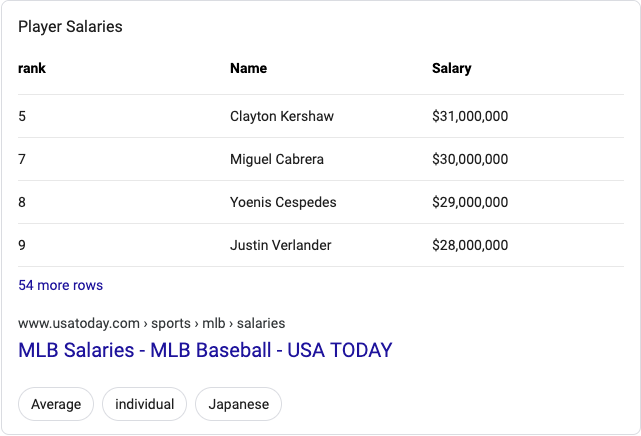It’s just my luck that Google would release an update to Featured Snippets a week after giving a presentation to one of clients on the importance of Featured Snippets. Luckily, it doesn’t change our proposed strategy, but this update is important to understand when including this in your own strategies.
What are Featured Snippets?
Before we get into this new update, it’s important to understand what Featured Snippets are. For years, they were “position 0” and appeared above the top ten organic search results. With the prevalence of ads and the “People Also Asked” collapsible table, having a Featured Snippet for search queries is especially valuable since it could require as much as two scrolls on desktop and even more on mobile to finally see the first organic search result.
Google pulls what it believes to be the best answer for given search queries and places it in the Featured Snippet. You don’t have to rank in the number one position, or even on the first page of search results, to have the Featured Snippet (this is important to note with the recent change), and made it important to include in SEO strategies.
There are three types of Featured Snippets Google will provide users depending on the search query.
Paragraph:
This is the most common Featured Snippet and Google will pull this from the page it deems to have the best answer to the given query.

List:
This type of Featured Snippet is best when the answer to a question is provided in sequential order, such as steps in recipe or process, though this is not always the case. This list of the types of Featured Snippets, for example, could be pulled and provided as a Featured Snippet if a user asks “what types of Featured Snippets are there”.

Table:
Table Featured Snippets are less common but this is when the information is pulled and provided in the SERPs as a, you guessed it, table view.

The Recent Featured Snippet Update
I mentioned that Featured Snippets were in position 0 and that you didn’t need to be on the first page of search results to get this ranking. This is what the change affects.
The first part of the change, which went into effect January 22, 2020, Featured Snippets will replace the first search result, so a lot of websites have likely seen a decrease in their number one rankings because of this update. This also bumps a first page rankings down to the second page, which has been shown to have a major impact on click-through-rates (since the second page of Google search is the best place to hide something).
The second part of the change is a bit more surprising at first glance, but once you think about why Google is doing this it’s not. Google focusing on the user experience and deduplicating SERPs is a step toward improving its product. This part of the change is that you cannot have a first page 1 ranking if you have a featured snippet that uses the same URL. For example, if the URL https://iPullRank.com/ had a Featured Snippet for “Most Innovate SEO Agency” and is also ranked number 1 for the same search query (because as our name suggests, we Pull Rank in this industry), then our number one ranking would have dropped to the second page.
But why? The answer is enhanced user experience. Google has made an effort to deduplicate search results so users don’t have to see the same URL multiple times on the first page. Essentially, it is an effort to prevent monopolization of search results (ironically by an oligopoly).
How Does This Impact SEO Strategies Going Forward?
This really depends on what your SEO strategy has been up to this point, but if you have been targeting the same search queries for both first page rankings and Featured Snippet results, then you will see a drastic change.
What you will need to do is prioritize sets of keywords that you don’t rank for on Page 1 and optimize the content on that URL to better match one of the three types of Featured Snippets. For example, if you rank on the second page of search results for the keyword “how to optimize your content for SEO” then you could prioritize the ranking URL and make adjustments to the copy, like updating the format to provide a sequential list of steps users need to take.
However, if you rank on the first page of search results for that search query, you will want to leave it alone so you don’t end up pushing your search result to the second page or down even further.
At iPullRank we have been pushing for our clients to prioritize optimizing content for Featured Snippets in this way for a while now because before this change you could cannibalize your own search result. With this change, however, a little bit of optimization can help you take over a competitor’s URL for keywords you want to target.

If you’re curious about what we are doing for our clients, feel free to reach out to me or anyone else at iPullRank to discuss. I am curious though, have you seen an impact on your site’s first page rankings since this change was released? Tweet your responses to @UncensoredNate or @ipullrankagency or comment below with your thoughts.
- How to Write Content to Win Featured Snippets - August 28, 2020
- How to Ramp Up Your Marketing During the Pandemic - June 5, 2020
- Why You Should Invest in SEO During a Recession - March 24, 2020





